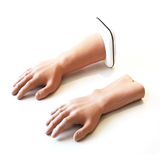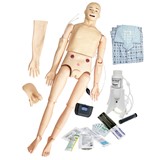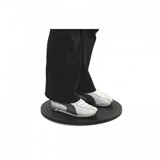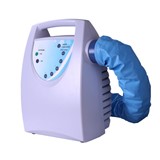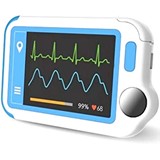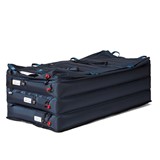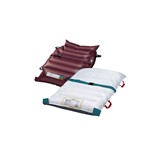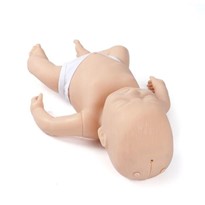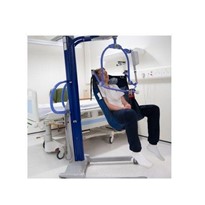Once a week, the labour ward’s resuscitation room turns into a simulation facility - the same place where the team normally rushes in to manage real life emergency situations. Everyone trains 4 times a year.
Relevant scenarios and corresponding learning objectives
1. Asphyxia in full-term newborn
- Initiate resuscitation measures
- Assign roles
- Perform mask ventilation
2. Neonatal meconium aspiration
- Extract inhaled amniotic fluid from the trachea
- Provide fluid replacement for hypovolemia
3. Preliminary care of extremely premature newborn
- Manage resuscitation issues
- Manage thermal economy
4. Resuscitation of a debilitated newborn
- Action steps from A-Z
Novice versus proficient staff: "Each of the 4 exercises serves a succinct and practical purpose," says Kalle Korhonen who is in charge of the obstetricians’ resuscitation training at Turku University Hospital. "For novice physicians, the first priority is practicing basic skills, but the complexity of the exercises is increased as experience is gained. On top of these, paediatric nurses and midwives have 2 dedicated exercises."
Team members: the team typically consists of 2 specialising physicians, 1 paediatric nurse, and 1-2 midwives. The patient simulator is placed on the resuscitation table where the action takes place in real-life situations as well.
Training requirements: before specialising physicians are allowed to assume on-call duties, they are required to perform at least 2 simulations, after which their mastery of the fundamentals is tested. After that, everyone practices 4 times a year, meaning that the resuscitation room is reserved for simulation practice every Monday for one hour.
During work hours: the training must be time efficient as attendance comes in addition to everyone’s regular duties.
Skills workshop to refresh clinical skills proficiency
In addition to systematic simulation training, the staff also maintains their competence by means of practical skills workshops.
How: "After a brief theory session we practice technical skills such as the insertion of an umbilical vein catheter and pleural drain. The skills workshop practice always relates to some kind of larger entity," Korhonen encourages the staff to do additional practice on their own. This is easy as the patient simulator is placed on a dedicated shelf next to the resuscitation table, where it can be used at any time. Technical skills are easy to practice independently.
The best things: fundamentals and cooperation
According to the staff, the best thing about simulation training is the opportunity to practice cooperation and the division of duties in peace. Things are not always that clear, after all.
"Based on the feedback we have received, practicing the fundamentals together as a team has been seen as important. Every now and then, someone gets help with a matter they have been preoccupied with or has an unclear matter resolved. Sometimes we go through a daunting treatment situation we have had in the past again as a simulation, which sheds light on the background of the case and provides valuable lessons for the future."
Training the essentials where you work: "The newborn patient simulator addresses precisely those issues that are most important from a practical point of view: we are able to listen to the heartbeat, see respiratory movements, practice the most important procedures and, above all, bring the patient simulator to where we actually work."
Same tools: the tools and equipment used for training are the same the team normally use, and they are picked up from the same place. "This way, people also learn where everything is located, which shows as enhanced responsiveness in real-life situations," says Korhonen. "When attending to a newborn, the staff will be able to better read the situation, and select the appropriate instruments in good time."
Debriefing enhances the learning outcomes
Confidential: the situations encountered in simulation training stay inside the classroom and are not dwelled upon after debriefing. Korhonen says the facilitators should skillfully guide the participants towards a self-initiated understanding of the training objectives. He adds that the quality of the debriefing has improved after the facilitators themselves attended more instruction.
Everyone learns: "The participants are eager to discuss their own performance and how they can do a better job. I myself have also learned a lot when colleagues from different disciplines comment on a situation from their own point of view. Important considerations frequently emerge that I previously hadn't even thought of." Korhonen recalls that in one debriefing, he learned some excellent new perspectives and ideas on better managing the thermal economy of extremely premature babies. The observations made in the debriefing enabled Korhonen to enhance his own expertise in nursing and care.






-160x160-state_article-rel-cat.png)
